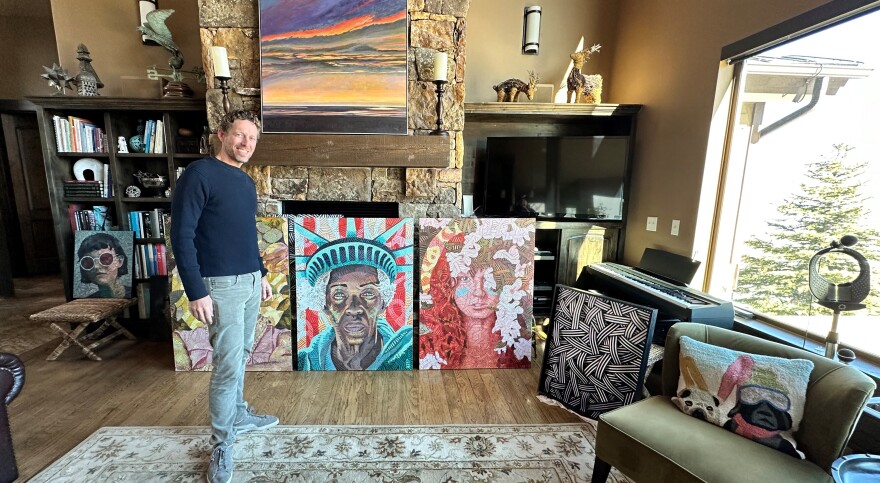Adam Himoff has been making art since he was a child growing up in New York City. After working for several decades in finance and venture capital, he moved with his family to Park City in 2013 and turned to art full time a few years ago.
Himoff’s work is heavily influenced by New York’s rich multiculturalism and the abundance of art that surrounded him from graffiti to public works to museums. He uses what he calls “line style” which was born from his work in linocut printmaking.
Himoff said, "I sort of, migrated from the linocuts to some of the paintings and then naturally continued, you know, since 2020.”
Last November, Himoff’s print of abolitionist and statesman Frederick Douglass was commissioned by Easton, Maryland, philanthropists and art enthusiasts Richard Marks and his wife, Amy Haines. They unveiled the 21-by-16-foot mural on the side of a building they own in historic Easton on Washington Street.
“And where the mural is actually located in Easton is near The Hill, which is purported to be the oldest settlement of freed slaves.”
Haines said the response to the mural has been mixed and very surprising.
“In my wildest imagination never thought there would be any negative feedback, you know, from the mural,” Haines said. “We were naive, you know, in that respect, and it's heightened our sensitivity to the force the image has to elicit some of these negative responses. It's been interesting.”
Marks said the public response has been mostly positive, however one of Douglass’ descendants, Tarence Bailey, expressed his concerns that the piece doesn’t correctly portray Douglass.
“I wasn't as surprised; he and I spoke within a couple of days after the mural was installed,” Marks said. “We've known each other for some time, and I certainly have great respect for his opinion and the reason for his reaction, or why he feels it does not properly portray his great, great, great uncle in this case.”
Himoff said his print depicts Douglass as if he was alive today. He described Douglass’ pose as modern and used by hip hop artists.
Douglass is crouched down, dressed in a tailored suit wearing Converse sneakers and a blingy watch, with the same forceful gaze he had in 19th century photographs.
“And it makes him, you know, something that we can recognize, something relatable, something cool, something fashionable,” Himoff said. “Frederick Douglass was very aware of his persona and his photographs, he wanted to be portrayed in certain ways. And he used fashion as a tool in the platform that he used.”

Himoff said his connection to Douglass began in college when he studied his speeches and became amazed by his story and the power of his persona. Himoff then imagined a modern-day Douglass and what form public oration might take in the 21st century.
“And so, I think it's just an intriguing question,” Himoff said. “I don't know the answer to it. I'm just posing the question of, ‘What would be the platform that Frederick Douglass would use today?’ And I think there's certainly a possibility that, you know, he could use hip hop, he could use, you know, public advocacy platforms, things like that. But I think that's what this piece is really exploring.”
For Marks and Haines the mural has created a bridge between them and some members of the community and a chance for younger generations to be exposed to history through art.
“The other really, you know, wonderful thing about it, too, is you see the people are walking up to it, little kids are having their photo in front of it,” they said. “And it's like a learning opportunity for some, you know, a little kid to go, ‘Whoa, who is this guy?’ And then dig a little more deeply.”
They said since the mural is on their private property, they plan on having it up for at least two maybe three more years and have a backup print just in case this one is damaged by the elements.
One of the original 40 print editions of Himoff’s Douglass artwork also hangs in the American Civil Liberties Union headquarters in New York. It’s part of the ACLU’s permanent collection.


